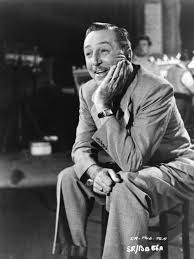Uncle Walt
Walt Disney's Wonderful World of Color
It's hard to forget the marvel of seeing the opening to Walt Disney's Wonderful World of Color on NBC. I was amazed to find out that year was 1961—the year we graduated from Westside. It seems now like it never was in black-and- white. It's also hard for me to remember that the program in its original form, Walt Disney's Disneyland, didn't begin until 1954. Perhaps it's because I grew up seeing Disney films and cartoons, and reading Disney comic books.
white. It's also hard for me to remember that the program in its original form, Walt Disney's Disneyland, didn't begin until 1954. Perhaps it's because I grew up seeing Disney films and cartoons, and reading Disney comic books.
Originally the program was designed to generate financing for Disney's theme park, Disneyland, in Oakland, CA. CBS and NBC rejected the opportunity, but ABC was happy to take it on.
Programming featured each of the main sections of the theme park: Davy Crockett, for example, represented Frontierland; 20,000 Leagues Under the Sea was from Adventure Land; Fantasyland brought us cartoons or animated films, and Tomorrow Land was an opportunity to present cutting-edge technology from the Disney studio and to predict possible futures, such as futuristic automobiles and highways.
ABC and Disney eventually had a falling out and the show, renamed Walt Disney's Wonderful World of Color, moved to NBC, the broadcasting company owned by RCA, maker of electronics, including color television sets. The opening of the program became the best reason to date to buy a new color tv.
The old:
The new:
Davy Crockett
Considering that Davy Crockett was merely a five-part serial that aired in one-hour episodes, it exerted an impressively outside influence. Few youngsters in the land couldn't sing the Ballad of Davy Crockett, few weren't at least tempted to secure a coonskin cap, and Fess Parker (who played Davy) was nearly as recognizable as Mickey Mantle.
The Mickey Mouse Club
The television version of the Mickey Mouse Club first aired in 1955 and ran continuously to 1959 on ABC. It was revived under a new but similar name in 1977, again in 1989, and most recently on The Disney Channel in 2017. It ended in 2018. The show actually had an antecedent in the theater-based Mickey Mouse Club which began in 1930. By 1932, the club had 1 million members, but Disney began to phase the club out in 1935.
The most famous of the Mouseketeers was Annette Funicello, who became almost as famous as Candice Bergan, who did not make the cut as a Mouseketeer. Neither did Paul Williams, the Oscar-winning vocalist/songwriter. Here are the Mouseketeers:
The show featured several major serials, the most famous of which was Spin and Marty, starring Tim Considine and David Stollery. Here's a sample:

